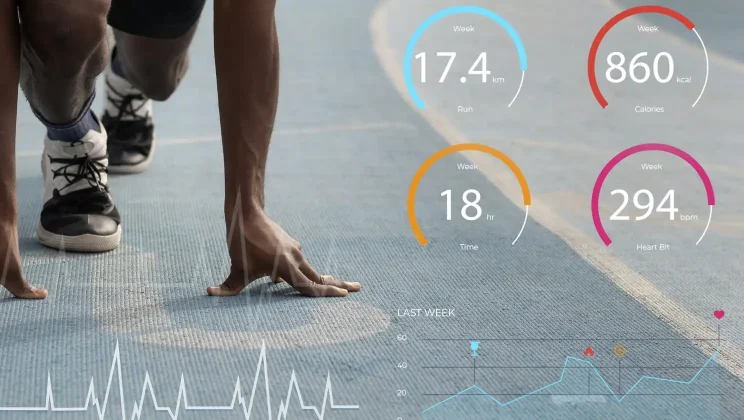Oil and energy companies have always been persistent adopters of innovative technologies. What’s more, potential application has always been varied, from oil rig hardware to automated internal operations, from equipment monitoring to interactions with customers and energy delivery. And of course, one should not forget the means to make it all possible, including the latest advances in the Internet of Things, Data Science, and cloud computing. The last things to add are the primary needs for failsafe work, care for the environment, and human safety. What we eventually see is hardware and software combined in solutions for the most widely discussed and relevant problems faced by the industry.
This is what we observed at Offshore Northern Seas, the world’s gathering place for oil & energy industry leaders, along with 7 technology trends that will influence this industry in 2021 and beyond.
Trend #1. IIoT dominates the market
At CES, the Internet of Things trends were the notion of the day. A good example that drew our attention was meteorological equipment for oil rigs. Whereas offshore operations are hugely dependent on weather conditions, an installed smart station can use multiple sensors to collect weather data. After that, it is processed within the station, and the initial weather forecast is made. This data can be sent to the cloud where it is analyzed, and thus the forecast accuracy is improved. When the forecast is sent back to the station, it can be verified, and thus works can be performed without putting human safety at risk.
Trend #2. Product companies introduce innovative solutions
The major bulk of innovative solutions—such as the one described above—is manufactured by product companies that are continuously looking for ways to stand out on the oil and energy market, and even rival larger companies.
Technology is seen by every company as a way to achieve a particular goal. Many products at ONS were at their early evolution stages, yet they looked promising owing to the viable ideas behind them—and they were mostly represented by sensors that accumulate data and make calculations. For a product company, everything starts with hardware inventions, while software development comprises the second phase. Each new advance in technology introduced to a product can make it well-distinguished on the market.
Trend #3. Slow adoption of technology by oil & energy enterprises
Large companies in the energy sector have innovation departments that delve into different directions, do research, and look for sustainable ways to innovate and automate their operations. Yet they do not haste to employ innovations on a large scale, due to the cost of error; before something is in production, its reliability must be meticulously tested and verified.
That said, even now larger companies tend to avoid restructuring their core systems. Even if a system has been over 20 years in service, new modules and services will most likely be built around its core, no matter how obsolete it is, so as to never compromise safety.
Trend #4. Data Science for smarter products
Data science and machine learning also received a fair share of attention at the event. Now it is not enough to build a smart solution that gathers data from sensors for further processing and reception of the outcome. It has to be gradually trained to increase accuracy.
As of now, the reliability issue still remains, and any outcome—such as the abovementioned weather forecast—is always a recommendation that must be verified by an operator.
Trend #5. Connection issues have yet to be overcome
Besides reliability, the next big issue is connection. Offshore, it tends to have rather poor bandwidth; in addition, it is rather expensive, which is the case of satellite connection.
The current solution is to perform heavy calculations and data processing on site, leaving as little as possible to send to the cloud in packages. Seamless synchronization of all data can be performed upon returning to the port. Some areas, such as North Sea, do offer communication systems with the possibility of real-time 4G connections of good pricing and quality. However, the overall issues retain their relevance for the sector.
Trend #6. Everyone moves to the cloud
Speaking of the cloud, about 80% of companies use or plan to use Microsoft Azure and related tech stacks for their products. It is no surprise considering that Azure is a corporate standard for numerous enterprises in other business spheres. It will be more relevant than ever when the sphere finally overcomes connection issues.
Augmented Reality Development Guide For Business Owners
Download PDFTrend #7. Reliability of products and operations is the key
For oil and energy companies, confidentiality of data and reliability of products are absolute necessities, because, as in the case of healthcare, the cost of error is extremely high, and human safety is the primary goal. Another vital factor is uniqueness of the existing proprietary software within a highly competitive environment. That’s why many companies remain hesitant about outsourcing, preferring in-house software development.
However, major software companies are aware of the security-related specifics of such industries, and have elaborate processes that diminish possible vulnerabilities regarding sensitive data. A number of energy delivery companies has already embraced outsourcing as a cost-effective way to employ tech innovation for business needs—see our case study for a fine example—so the entire sector is likely to evolve in the same direction following industrial IoT trends.




